List of governors of California before 1850 facts for kids

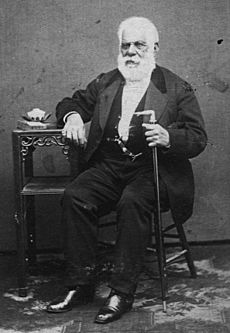
This article tells you about the leaders, called governors, who ruled California from 1769 to 1850. This was before California became the 31st state of the United States.
California was first explored by Gaspar de Portolá. Spain set up colonies there, like San Diego and Monterey. Back then, California was a faraway Spanish area, part of a bigger Spanish territory called New Spain. In 1822, Mexico became independent from Spain, and California became part of Mexico.
Later, in 1836, some local Californians, called Californios, led by Juan Bautista Alvarado and José Castro, took control. Alvarado became governor. This conflict ended in 1838 when the Mexican government officially recognized Alvarado as California's governor.
Another disagreement over who should be governor happened in 1844. It was settled when Pio Pico, another Californio, became the last governor of Mexican California. In 1846, a group in Sonoma declared California an independent country, calling it the "Bear Flag Republic." However, no real government was formed, and this new republic didn't last long. Less than a month later, the United States military took over California at the start of the Mexican-American War. California was given to the U.S. in 1848. On September 9, 1850, California officially became the 31st U.S. state. Peter Burnett, who was the last governor of the military territory after the war, became California's first state governor.
Contents
Spanish Rule in California (1769–1822)
The Spanish Empire began its rule in California in 1769. At that time, the area called the Californias was huge. It included what is now the U.S. state of California (called Alta California) and the Baja California region in Mexico. These areas were all managed by a military governor. In 1804, the Californias were split into two separate areas: Alta California, with its main city in Monterey, and Baja California, based in Loreto.
Spanish Governors of Las Californias (1769–1804)
From 1769 to 1804, both parts of California were governed as one area under the Spanish Empire. After 1804, Alta California and Baja California each had their own leaders.
| No. | Portrait | Governor | Took office | Left office | Notes |
|---|---|---|---|---|---|
| 1st |  |
Gaspar de Portolá (1716–1786) |
1767 | 1770 |
|
| 2nd | Felipe de Barri (1700s–1784) |
1770 | 1774 |
|
|
| Acting | Pedro Fages (1734–1794) |
1770 | 1774 |
|
|
| 3rd | 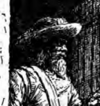 |
Fernando Rivera y Moncada (1725–1781) |
1774 | 1777 |
|
| 4th |  |
Felipe de Neve (1724–1784) |
1777 | 1782 |
|
| 5th | Pedro Fages (1734–1794) |
1782 | 1791 |
|
|
| 6th | José Antonio Roméu (1734–1794) |
1791 | 1792 |
|
|
| Interim | José Joaquín de Arrillaga (1750–1814) |
1792 | 1794 |
|
|
| 7th | Diego de Borica (1742–1800) |
1794 | 1800 |
|
|
| Interim | Pedro de Alberní y Teixidor (1742–1800) |
1800 | 1800 |
|
|
| 8th | José Joaquín de Arrillaga (1750–1814) |
1800 | 1804 |
|
Spanish Governors of Alta California (1804–1822)
After the Californias were divided in 1804, Alta California got its own government. José Joaquín de Arrillaga, who had been the governor of both Californias, became the first governor of Alta California.
| No. | Portrait | Governor | Took office | Left office | Notes |
|---|---|---|---|---|---|
| 1st | José Joaquín de Arrillaga (1750–1814) |
1804 | 1814 |
|
|
| Interim | José Darío Argüello (1753–1828) |
1814 | 1815 |
|
|
| 2nd | Pablo Vicente de Solá (1753–1828) |
1815 | 1822 |
|
Mexican Rule in California (1822–1846)
After Mexico won its independence from Spain, both parts of California became part of the new country of Mexico in 1822. Mexican rule was interrupted from 1836 to 1838 by a movement for independence led by Juan Bautista Alvarado. He was even called the President of Alta California for a time. However, Alvarado later talked with the Mexican government. This led to the independence movement ending, with Alvarado being recognized as governor and California getting more freedom from Mexico. This re-established Mexican rule until 1846.
Mexican Governors of Alta California (1822–1836)
| No. | Portrait | Governor | Took office | Left office | Notes |
|---|---|---|---|---|---|
| 3rd |  |
Luis Antonio Argüello (1784–1830) |
1822 | 1825 |
|
| 4th | José María de Echeandía (1800s–1871) |
1825 | 1831 |
|
|
| 5th | Manuel Victoria (1700s–1833) |
1831 | 1832 |
|
|
| Interim | José María de Echeandía (1800s–1871) |
1832 | 1833 |
|
|
| 6th | José Figueroa (1792–1835) |
1833 | 1835 |
|
|
| Interim | 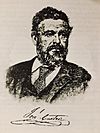 |
José Castro (1808–1860) |
1835 | 1836 |
|
| Interim | Nicolás Gutiérrez (1700s–1800s) |
1836 | 1836 |
|
|
| 7th | Mariano Chico (1796–1850) |
1836 | 1836 |
|
|
| Interim | Nicolás Gutiérrez (1700s–1800s) |
1836 | 1836 |
|
President of Alta California (1836–1837)
After the unpopular governors Gutiérrez and Chico, Juan Bautista Alvarado led a successful uprising of Californios in 1836. They removed Gutiérrez, declared Alta California independent from Mexico, and named Alvarado as its president. Alvarado controlled California until he started talking with the Mexican government in 1837. This led to the end of Alta California's independence. In return, Alvarado was recognized as Governor of Alta California, and the region gained more freedom from Mexico.
| No. | Portrait | Governor | Took office | Left office | Notes |
|---|---|---|---|---|---|
| 1st | 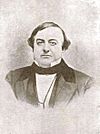 |
Juan Bautista Alvarado (1809–1882) |
1836 | 1837 |
|
Mexican Governors of California (1837–1847)
While Juan Bautista Alvarado was in control as President of Alta California, the Mexican government appointed Carlos Antonio Carrillo as governor to try and regain control. But Carrillo was not successful. So, Alvarado and the Mexican government negotiated an end to the conflict. Alvarado gave up the idea of independence in exchange for more local control and the official governorship. This brought back Mexican rule over Alta California.
| No. | Portrait | Governor | Took office | Left office | Notes |
|---|---|---|---|---|---|
| Nominated |  |
Carlos Antonio Carrillo (1783–1852) |
1837 | 1837 |
|
| 8th |  |
Juan Bautista Alvarado (1809–1882) |
1837 | 1842 |
|
| 9th | 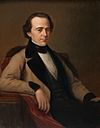 |
Manuel Micheltorena (1804–1853) |
1842 | 1845 |
|
| 10th | 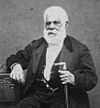 |
Pío Pico (1801–1894) |
1845 | 1846 |
|
| Nominated | José María Flores (1818–1866) |
1846 | 1847 |
|
|
| Nominated | 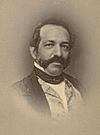 |
Andrés Pico (1810–1876) |
1847 | 1847 |
|
American Rule in California
After the American takeover of California, the U.S. military began to rule the area in 1846. Military governors were in charge until 1849. Then, efforts led by Bennet C. Riley resulted in the creation of the first Constitution of California at a meeting in Monterey. This led to civilian rule, with Peter Hardeman Burnett being elected as the first governor of California. Soon after, California was officially admitted as a state.
U.S. Military Governors of California (1846–1849)
| No. | Portrait | Governor | Took office | Left office | Notes |
|---|---|---|---|---|---|
| 1st | 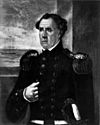 |
John D. Sloat (1781–1867) |
1846 | 1846 |
|
| 2nd | 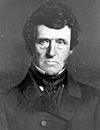 |
Robert F. Stockton (1795–1866) |
1846 | 1847 |
|
| 3rd | 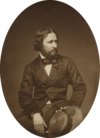 |
John C. Frémont (1813–1890) |
1847 | 1847 |
|
| 4th | 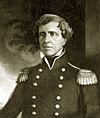 |
Stephen W. Kearny (1794–1848) |
1847 | 1847 |
|
| 5th |  |
Richard Barnes Mason (1797–1850) |
1847 | 1849 |
|
| 6th | 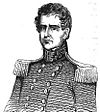 |
Persifor Frazer Smith (1798–1858) |
February 28, 1849 | April 12, 1849 |
|
| 7th | 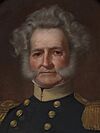 |
Bennet C. Riley (1787–1853) |
1849 | 1849 |
|
See also
- Governor of California
- List of governors of California, since 1850
- List of Californios people
- The Californias
- Alta California
External links
Gobernadores de California antes de 1850#top

